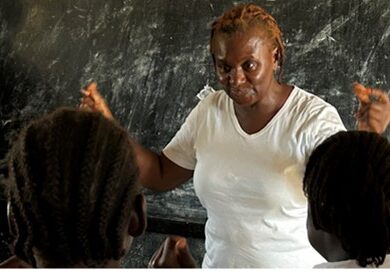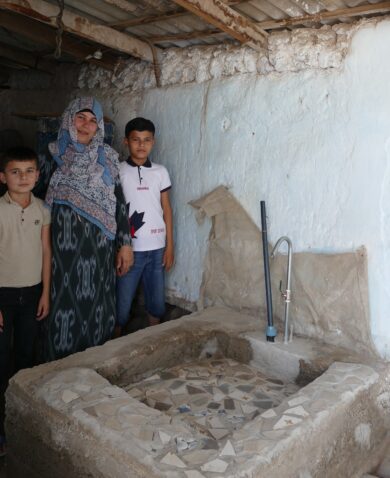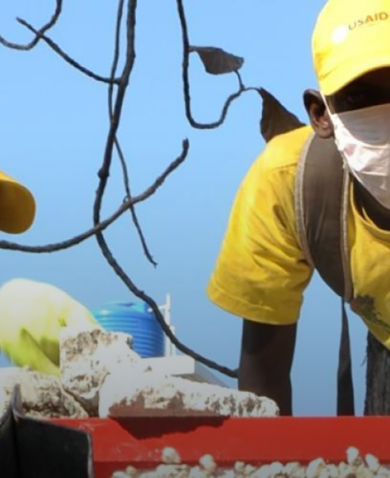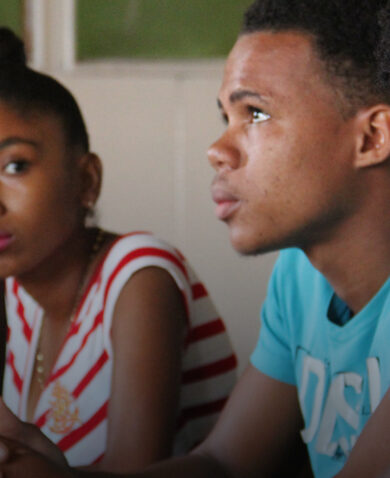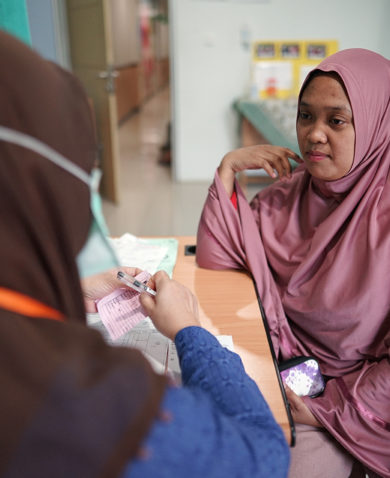
All Hands on Deck: Furthering Youth Engagement in Climate Mitigation
August 11, 2021 | 5 Minute ReadAs we celebrate International Youth Day, how can global development amplify youth voices and action as an integral part of fighting the climate crisis.
![]() In celebration of International Youth Day, Chemonics calls on the global development community to amplify youth voices and embrace them as an integral part of fighting the climate crisis. At Chemonics, we believe that empowering young people to improve the structures around them catalyzes positive, more inclusive outcomes for youth and their communities.
In celebration of International Youth Day, Chemonics calls on the global development community to amplify youth voices and embrace them as an integral part of fighting the climate crisis. At Chemonics, we believe that empowering young people to improve the structures around them catalyzes positive, more inclusive outcomes for youth and their communities.
Young people will suffer the greatest consequences if ambitious measures to mitigate climate change are not immediately taken, and thus, they have the most to gain from climate action. Those between the ages of 10 and 24 currently make up 23.6 percent (nearly 1.9 billion persons) of the world’s population, accounting for the largest age segment in many countries. As a “threat multiplier,” climate variability and change is exacerbating existing challenges like global food and water security, ecosystem and human health, and income and social inequalities; it could lead to an 18 percent decrease in global GDP by 2050 with disproportionate impacts on impoverished communities, and drive increases in internal displacement and migration. Ambitious steps towards net zero emissions of greenhouse gases (GHGs) are needed to mitigate climate change through low-emissions economic growth, while raising living standards more equitably.
The Importance of Youth Engagement
Nearly 90 percent of young people live in low- and middle-income countries and are among those experiencing the most significant effects of the climate crisis. Youth, which can include those up to age 35, often includes a number of transitory life phases. From completing education to establishing economic security and even starting a family, most of these major life milestones occur during the youth time frame. However, climate change is capable of disrupting said milestones, causing life-long repercussions. Youth around the world recognize the urgency to act and are at the forefront of climate action, often initiating their own movements.
Young people are likely to spend a substantial portion of their lives contributing to climate mitigation. To combat rising sea levels, record-breaking global temperatures, and achieve the Paris Agreement’s goal of restricting global warming to well below 2°C, they will have to decrease their lifetime carbon emissions by eight times that of their grandparents. Even impacts to those below the youth threshold have already been recorded, with 88 percent of children bearing the global disease burden caused by climate change, demonstrating the need for active engagement on all fronts. Moreover, the climate crisis further exacerbates inequalities, including those associated with gender, race, and income, all of which crosscut the youth population. Young people are playing their part by generating innovative solutions, and some of the entrepreneurs from among them are building sustainable businesses and the green technologies that will drive the world’s economy in the second half of this century. As they increasingly acquire purchasing power, voting rights, and the ability to influence business and political leaders, young people are becoming more equipped for continual, intergenerational participation.
Practical Implementation
A crisis of this magnitude requires all hands on deck – everyone, regardless of age, has a role to play. Listed below are practical steps that the global development community can implement to further youth engagement in climate mitigation:
1. Support the Private Sector to Provide Green Skills and Green Jobs for Youth
Private companies account for a major share of the industrial and commercial sectors responsible for global GHG emissions. In contrast, private companies account for a higher proportion of the industrial and commercial sectors, such as clean energy, that will help solve the problem of climate change. Further, addressing climate change is good business for incumbent enterprises. Not only has climate change exposed operations to physical hazards, such as extreme weather conditions, but could cause the global economy to lose $234 billion per year and jeopardize human health. Climate action from the private sector is associated with risk management, ensuring long-term returns on investment, and is a means for them to stand out from their competitors as climate leaders. The global development community should increase financial support to the private sector, in particular small- and medium-sized enterprises, to enhance their capacity to adopt greener behavior across supply chains. This is particularly true in emerging markets, where young entrepreneurs and the wider youth population can benefit the most from developing green skills. One way to invest in businesses is to establish a business incubator focused on clean energy and technologies around the world, like UNLEASH and the Private Financing Advisory Network,. The world needs more efforts like these to help mobilize young entrepreneurs and meet the scale of the global climate change challenge.
2. Prioritize Actionable Climate Change Education
Now is the time for education systems to advance curricula beyond “big picture” climate change history and science, but to integrate climate change across technical disciplines and advance locally relevant, practical solutions. The only way to do this is to ensure that teachers are supported, and the asks are simple and grounded in their lived realities. Cambodia, ranked among the top three countries most vulnerable to climate change in Asia, and with two-thirds of its population under the age of 20, is bringing awareness to the climate crisis through its earth science curriculum for secondary school students. This curriculum provides context on their country’s vulnerability to climate change and introduces approaches and technologies to reduce greenhouse gas emissions. Proper climate education and literacy enables young people to think globally and act locally to address climate change. Education should also prepare and link youth to green jobs available to protect and heal the planet. In a concrete example, USAID’s South Africa Low Emissions Development program supported training in energy auditing at community technical/vocational schools that enabled participants to support local municipal governments to develop energy efficiency and renewable energy projects. The approaches outlined in A Green Learning Agenda expands further on the concept of greening of technical and vocational education and training institutions and connects social factors to the sustainability of the green labor force.
3. Create Space for Youth as Leaders and Decision-Makers
Intergenerational cooperation can be effective when all parties know that they are being heard. We must empower young people with the skills, tools, and platforms to engage in political processes broadly. Including them in the decision-making process communicates that their thoughts and recommendations are valued at the highest level, setting the groundwork for success from the very beginning. It also prepares them to take on greater leadership responsibilities, as in the case with the recent board election of ExxonMobil. Young activist investors secured board positions for individuals ready to push the company to be more accountable and aggressive in meeting the climate change challenge. With so much at stake by 2050, only 29 years from now, young people are no longer future actors. Their time to act is now.
Young people will not be the sole beneficiaries of these recommendations, and in fact, they actually hold the keys to inclusive and innovative solutions that may not be listed above. Amplifying and empowering the collective youth message will propel the growing youth climate movement even farther. With youth at the helm, we can generate more effective solutions that will help put the world’s economic model on a more sustainable pathway and ultimately reach net zero by the time they reach middle age.
Banner image caption: Participants in USAID’s Youth Leadership for Agriculture Activity in Uganda.
Posts on the blog represent the views of the authors and do not necessarily represent the views of Chemonics.















